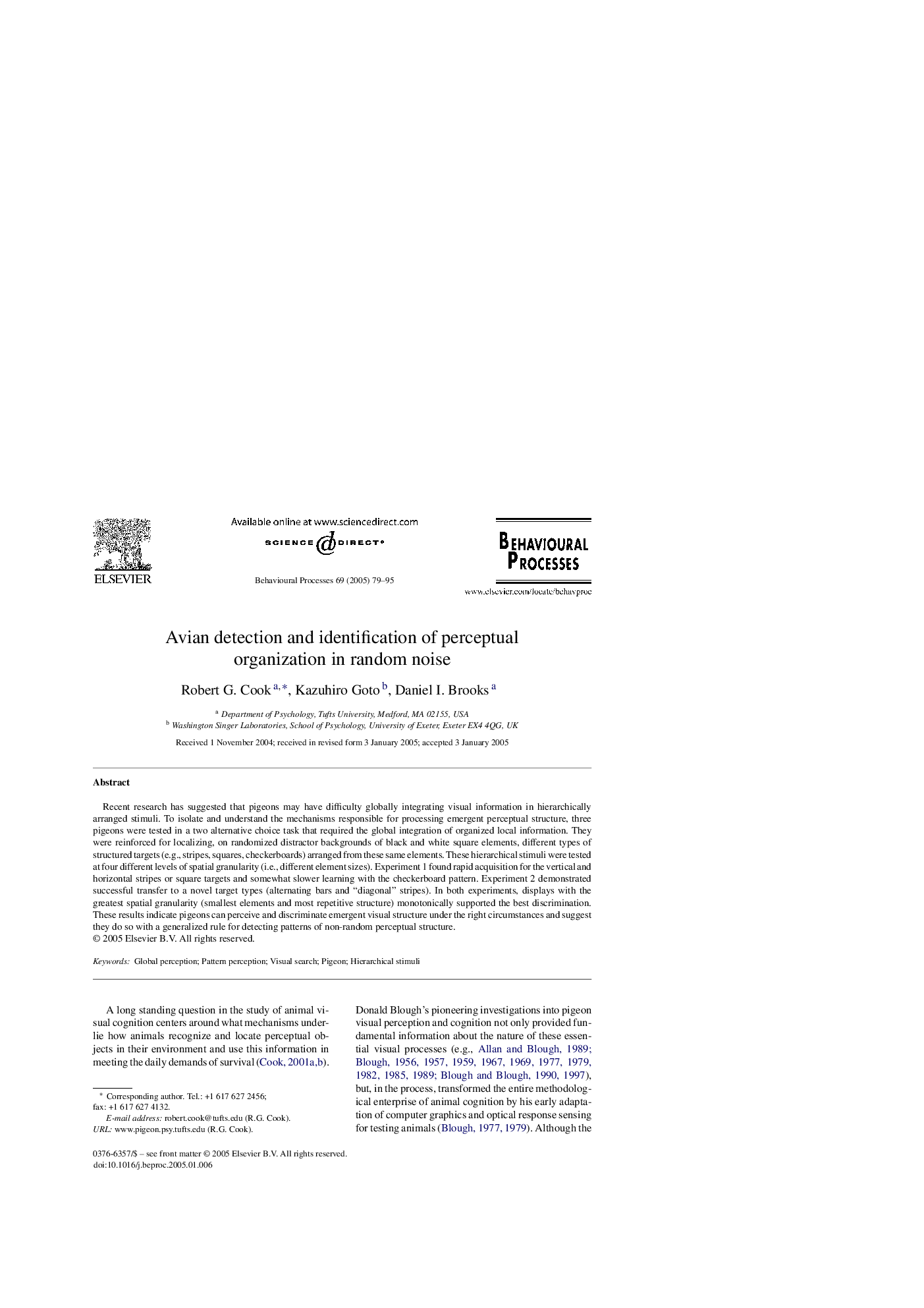| Article ID | Journal | Published Year | Pages | File Type |
|---|---|---|---|---|
| 8977388 | Behavioural Processes | 2005 | 17 Pages |
Abstract
Recent research has suggested that pigeons may have difficulty globally integrating visual information in hierarchically arranged stimuli. To isolate and understand the mechanisms responsible for processing emergent perceptual structure, three pigeons were tested in a two alternative choice task that required the global integration of organized local information. They were reinforced for localizing, on randomized distractor backgrounds of black and white square elements, different types of structured targets (e.g., stripes, squares, checkerboards) arranged from these same elements. These hierarchical stimuli were tested at four different levels of spatial granularity (i.e., different element sizes). Experiment 1 found rapid acquisition for the vertical and horizontal stripes or square targets and somewhat slower learning with the checkerboard pattern. Experiment 2 demonstrated successful transfer to a novel target types (alternating bars and “diagonal” stripes). In both experiments, displays with the greatest spatial granularity (smallest elements and most repetitive structure) monotonically supported the best discrimination. These results indicate pigeons can perceive and discriminate emergent visual structure under the right circumstances and suggest they do so with a generalized rule for detecting patterns of non-random perceptual structure.
Related Topics
Life Sciences
Agricultural and Biological Sciences
Animal Science and Zoology
Authors
Robert G. Cook, Kazuhiro Goto, Daniel I. Brooks,
